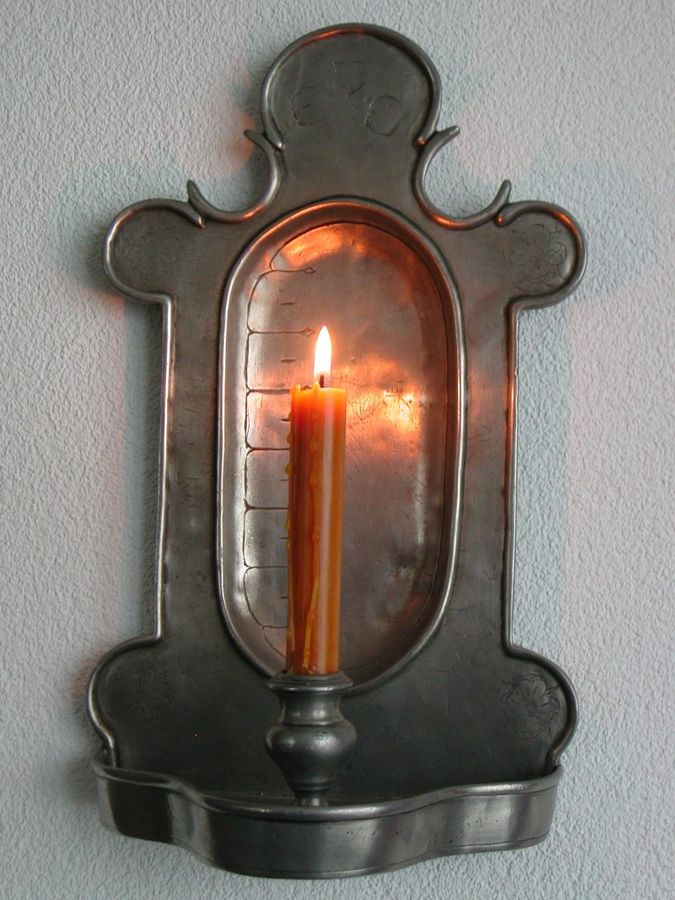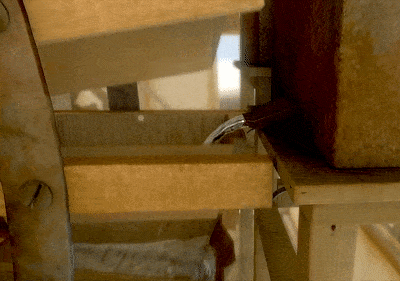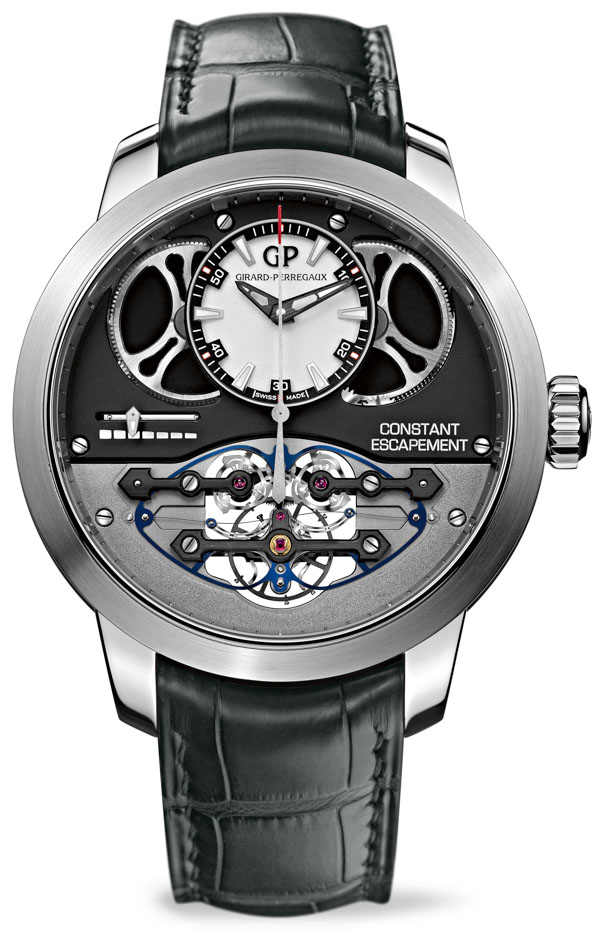A small mechanism by which we know the exact time.
Few things we pay as much attention as time. We do not want to be late for work or on a date. Even more we do not want to grow old and die. Proper time tracking is important in all aspects of human activity, and we began to worry about it almost immediately after we moved from hunting and gathering to agriculture and commerce.

Clock candle
Measuring time requires a repetitive process for counting equal intervals and a way to track and show the result. The first time tracking devices were based on the movement of the sun. Ancient Egyptians around 3500 BC built obelisks, which cast shadows on the ground and thus gave an approximate concept of the time of day. Then came the turn of the substances that were wasted at the same speed: candles, incense, water and hourglass. A huge breakthrough came with the invention of the mechanical clock and the trigger mechanism.

The earliest known Greek water clock trigger
')
To work hours need energy. The trigger mechanism is a way to release this energy in small fractions at regular time intervals. In the animation, the wheel is connected to an energy source - a spring or weights. By itself, the wheel will rotate at maximum speed until the energy runs out. But if we add an anchor, the wheel will turn a few degrees at a time and at equal intervals of time - this is exactly what it takes to measure time.
The earliest trigger was described by the Greek engineer Philo of Byzantine in the 3rd century BC. A spoon with a counterweight is poured from a container with water, and is tilted into the bowl when filled, while releasing the ball from pumice. After tipping it, it returns the counterweight back, and, pulling the thread, closes the doors that release the balls.

Another trigger was built by the famous Chinese scientist and inventor Su Song in 1094. The wheel was stopped by a mechanism that released it only when the weight of the filling bucket reached a certain value. If water flowed at a constant speed, the wheel turned at regular time intervals. The invention is known as the Astronomical Clock Tower, and was multi-story. It has not survived, but the animation, taken from a historical TV channel, helps to evaluate the structure and understand the principle of its work.

The first fully mechanical watches appeared thanks to the spindle trigger. It is not known where he appeared in the mechanical clock of the XIV century, but met in large towers across Europe. Its accuracy was not very different from a water clock, but at least it did not freeze in winter. The spindle trigger remained the main way of counting time, until the invention of the pendulum and spring balancer in 1657, when the accuracy of the mechanism increased from several hours a day to several minutes a day.

After the invention of the pendulum clock, more than 300 different types of triggers were developed. Of course, now only a few of them are used. The most basic ones are:
Cylindrical Tompion / Graham mechanism, 1695-1726
Hooke's duplex mechanism, 1700
Lever mechanism Madja, 1750
Arnold lock mechanism, 1775
A very interesting idea is used in the grasshopper mechanism, developed in 1722 by John Harrison. He moves in an unusual, almost hypnotizing way. Its main advantage is very low friction.

The improvement of the mechanical clock continued both in terms of accuracy and in terms of miniaturization, and the trigger was the central part of any watch. The appearance of an electric clock has replaced the mechanism with electric methods of obtaining regular pulses: solenoids, synchronous motors and tuning fork oscillators. As a result, watches appeared without any watch movements.
In 1927, the first quartz watches were created in the Bell laboratory. To measure time intervals, they use periodic oscillations of a quartz crystal. Seiko introduced the first quartz watch , Astron, in 1969. After ten years, quartz has already captured the market. The combination of low cost and high precision led to a "quartz crisis" when the mechanical watch almost disappeared from sale.
The last improvement came with the advent of atomic clocks using the transition between two ultrafine levels of the ground state of an atom. They allow you to count time with unprecedented accuracy. They are used in GPS satellites and any devices that are synchronized with them, get the same opportunities for counting the exact time. In the future, probably, such watches can be worn on the wrist.

Girard Perregaux, 2008
Today still produce mechanical watches with trigger mechanisms. Due to the proliferation of mobile phones, many have already abandoned even quartz watches. But in the miniature mechanisms there is some kind of inner beauty. They personify the triumph of mastery over precision.
Modern mechanical watches are one of the most complex and beautiful existing mechanisms. They can cost hundreds of thousands of dollars, and of course, are collectibles. And today, watch engineers continue to develop triggers in search of methods to increase accuracy and reliability.


Clock candle
Measuring time requires a repetitive process for counting equal intervals and a way to track and show the result. The first time tracking devices were based on the movement of the sun. Ancient Egyptians around 3500 BC built obelisks, which cast shadows on the ground and thus gave an approximate concept of the time of day. Then came the turn of the substances that were wasted at the same speed: candles, incense, water and hourglass. A huge breakthrough came with the invention of the mechanical clock and the trigger mechanism.

The earliest known Greek water clock trigger
')
To work hours need energy. The trigger mechanism is a way to release this energy in small fractions at regular time intervals. In the animation, the wheel is connected to an energy source - a spring or weights. By itself, the wheel will rotate at maximum speed until the energy runs out. But if we add an anchor, the wheel will turn a few degrees at a time and at equal intervals of time - this is exactly what it takes to measure time.
The earliest trigger was described by the Greek engineer Philo of Byzantine in the 3rd century BC. A spoon with a counterweight is poured from a container with water, and is tilted into the bowl when filled, while releasing the ball from pumice. After tipping it, it returns the counterweight back, and, pulling the thread, closes the doors that release the balls.

Another trigger was built by the famous Chinese scientist and inventor Su Song in 1094. The wheel was stopped by a mechanism that released it only when the weight of the filling bucket reached a certain value. If water flowed at a constant speed, the wheel turned at regular time intervals. The invention is known as the Astronomical Clock Tower, and was multi-story. It has not survived, but the animation, taken from a historical TV channel, helps to evaluate the structure and understand the principle of its work.

The first fully mechanical watches appeared thanks to the spindle trigger. It is not known where he appeared in the mechanical clock of the XIV century, but met in large towers across Europe. Its accuracy was not very different from a water clock, but at least it did not freeze in winter. The spindle trigger remained the main way of counting time, until the invention of the pendulum and spring balancer in 1657, when the accuracy of the mechanism increased from several hours a day to several minutes a day.

After the invention of the pendulum clock, more than 300 different types of triggers were developed. Of course, now only a few of them are used. The most basic ones are:
Cylindrical Tompion / Graham mechanism, 1695-1726
Hooke's duplex mechanism, 1700
Lever mechanism Madja, 1750
Arnold lock mechanism, 1775
A very interesting idea is used in the grasshopper mechanism, developed in 1722 by John Harrison. He moves in an unusual, almost hypnotizing way. Its main advantage is very low friction.

The improvement of the mechanical clock continued both in terms of accuracy and in terms of miniaturization, and the trigger was the central part of any watch. The appearance of an electric clock has replaced the mechanism with electric methods of obtaining regular pulses: solenoids, synchronous motors and tuning fork oscillators. As a result, watches appeared without any watch movements.
In 1927, the first quartz watches were created in the Bell laboratory. To measure time intervals, they use periodic oscillations of a quartz crystal. Seiko introduced the first quartz watch , Astron, in 1969. After ten years, quartz has already captured the market. The combination of low cost and high precision led to a "quartz crisis" when the mechanical watch almost disappeared from sale.
The last improvement came with the advent of atomic clocks using the transition between two ultrafine levels of the ground state of an atom. They allow you to count time with unprecedented accuracy. They are used in GPS satellites and any devices that are synchronized with them, get the same opportunities for counting the exact time. In the future, probably, such watches can be worn on the wrist.

Girard Perregaux, 2008
Today still produce mechanical watches with trigger mechanisms. Due to the proliferation of mobile phones, many have already abandoned even quartz watches. But in the miniature mechanisms there is some kind of inner beauty. They personify the triumph of mastery over precision.
Mechanical watches are so beautifully useless. Each mechanism is a miniature world, tiny, functioning, a mass of small and incomprehensible moving parts. Moving parts! As a result, this watch is alive in some sense. They have a heartbeat. They seem to respond, like Tamagotchi, to “love,” in the form of the expensive services of watchmakers. Like the ancient steam cars or Vincent motorcycles, they can be meticulously restored from almost any state.
- William Gibson
Modern mechanical watches are one of the most complex and beautiful existing mechanisms. They can cost hundreds of thousands of dollars, and of course, are collectibles. And today, watch engineers continue to develop triggers in search of methods to increase accuracy and reliability.

Source: https://habr.com/ru/post/399329/
All Articles